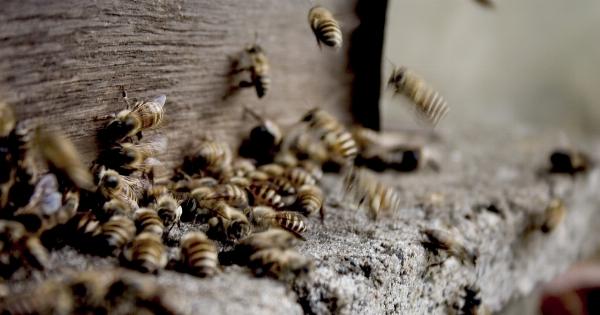Steam inhalation is a popular home remedy that involves breathing in warm, moist air to help relieve congestion and ease cold symptoms.
It is believed to be effective in loosening mucus and clearing the nasal passages, providing temporary relief from symptoms such as a stuffy or runny nose, sinus pressure, and headaches.
How Does Steam Inhalation Work?
When you inhale steam, the warm vapor helps to moisturize and soothe the respiratory system. It can help thin the mucus in your nasal passages and break up congestion, making it easier to breathe.
Additionally, the heat from the steam can help reduce inflammation in the nasal passages, providing relief from discomfort.
The Benefits of Steam Inhalation for Cold Symptoms
Steam inhalation can provide various benefits when it comes to easing cold symptoms:.
1. Loosens Mucus
One of the primary benefits of steam inhalation is its ability to loosen mucus in the nasal passages and respiratory system. When you have a cold, your nasal passages may become congested due to the excessive production of mucus.
Inhaling steam can help thin the mucus, making it easier to expel.
2. Clears Nasal Passages
Blocked nasal passages are a common symptom of a cold. The warm, moist air from steam inhalation can help unblock your nose by reducing inflammation and swelling in the nasal tissues.
This can alleviate congestion and make it easier to breathe through your nose.
3. Reduces Sinus Pressure
Steam inhalation can also provide relief from sinus pressure caused by a cold. The warm steam helps to open up your sinuses and promote drainage, reducing the discomfort and pain associated with sinus pressure.
4. Relieves Headaches
Headaches are a common symptom of viral colds. The steam from inhalation can help relieve your headache by reducing inflammation in the blood vessels and promoting relaxation.
It may also help alleviate tension in the muscles of the face and head, providing relief from headache pain.
5. Soothes Irritated Airways
When you have a cold, your airways may become irritated and inflamed. Inhaling steam can help soothe the irritated tissues, providing temporary relief from discomfort and coughing.
How to Perform Steam Inhalation
Here is a step-by-step guide on how to perform steam inhalation:.
Step 1: Gather the Supplies
You will need the following supplies:.
- A large bowl or basin
- Hot water
- A towel
- Essential oils (optional)
Step 2: Boil Water
Boil a pot or kettle of water until it produces steam. You can also use a humidifier or vaporizer to generate steam.
Step 3: Pour the Water
Transfer the boiling water to a large bowl or basin. Be careful to avoid any splashing or burns.
Step 4: Add Essential Oils (Optional)
If desired, add a few drops of essential oils such as eucalyptus or peppermint to the hot water. These oils can provide additional respiratory benefits and a pleasant aroma.
Step 5: Position Yourself
Place the bowl on a sturdy surface, such as a table or countertop. Position yourself comfortably in a chair and lean over the bowl, ensuring that your face is at a safe distance to prevent burns.
Step 6: Cover Your Head
Cover your head with a towel, creating a tent-like enclosure around the bowl. This traps the steam and allows you to inhale the moist air more effectively.
Step 7: Inhale Slowly
Inhale the steam slowly and deeply through your nose. Take slow, steady breaths, allowing the warm vapor to penetrate your nasal passages and airways.
Step 8: Take Breaks
If the steam becomes too hot or overwhelming, take breaks by lifting the towel and stepping away from the bowl. This will help prevent discomfort or burns.
Step 9: Continue for 5-10 Minutes
Continue inhaling the steam for 5-10 minutes or until the water cools down significantly. This duration is typically sufficient to experience the benefits of steam inhalation.
Step 10: Blow Your Nose
After you finish steam inhalation, blow your nose gently to expel any loosened mucus and clear your nasal passages.
Precautions and Considerations
While steam inhalation is generally safe and effective, there are some precautions and considerations to keep in mind:.
1. Hot Water Safety
Boiling water can cause severe burns if mishandled. Be cautious while pouring the hot water and ensure that the bowl is placed on a stable surface to prevent accidental spills or splashing.
2. Safe Distance
Make sure to maintain a safe distance from the bowl to avoid burns. The steam should feel comfortably warm, not scalding.
3. Essential Oil Usage
If you choose to use essential oils, ensure they are suitable for steam inhalation, as not all oils are safe for direct inhalation. Consult a reputable source or aromatherapist for guidance.
4. Medical Conditions
If you have pre-existing respiratory conditions, such as asthma or chronic obstructive pulmonary disease (COPD), consult your doctor before trying steam inhalation. They can advise you on the potential risks and benefits specific to your condition.
5. Not a Cure
While steam inhalation can provide temporary relief from cold symptoms, it is not a cure for the common cold or any other respiratory infections. It should be used as a supplementary measure alongside other recommended treatments.
Conclusion
Steam inhalation can be a helpful and soothing remedy for easing cold symptoms. The warm, moist air can provide relief from congestion, sinus pressure, headaches, and irritated airways.
By following the correct steps and taking necessary precautions, steam inhalation can offer temporary relief and contribute to your overall comfort during a common cold.






























